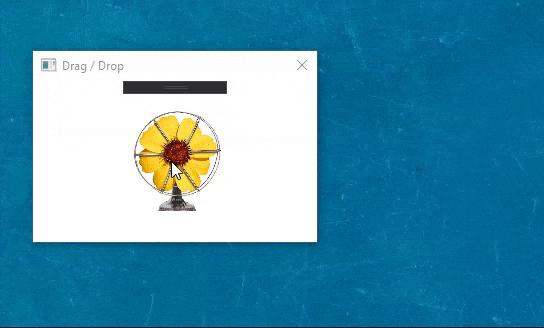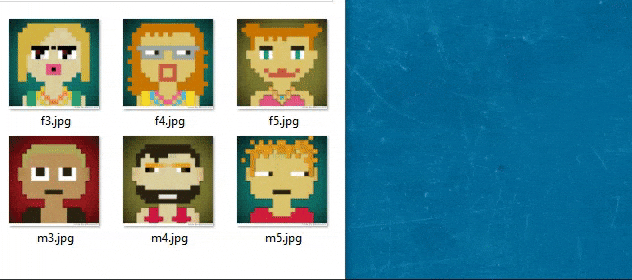Ich habe eine kleine WPF-Anwendung, die ein Fenster mit einem Bildsteuerelement hat. Die Bildsteuerung zeigt ein Bild aus dem Dateisystem. Ich möchte, dass der Benutzer das Bild ziehen und auf den Desktop oder irgendwo hin ablegen kann, um es zu speichern. Es funktioniert gut.
Aber ich möchte ein kleines Bild-Miniaturbild zusammen mit dem Mauszeiger anzeigen, wenn der Benutzer es zieht. Genau wie wir ein Bild aus dem Windows-Datei-Explorer an eine andere Stelle ziehen. Wie erreicht man das?
Aktuelles Verhalten von Drag / Drop
Gewünschtes Verhalten
Hier ist mein XAML-Code
<Grid>
<Image x:Name="img" Height="100" Width="100" Margin="100,30,0,0"/>
</Grid>
Hier ist C # Code
public partial class MainWindow : Window
{
string imgPath;
Point start;
bool dragStart = false;
public MainWindow()
{
InitializeComponent();
imgPath = "C:\\Pictures\\flower.jpg";
ImageSource imageSource = new BitmapImage(new Uri(imgPath));
img.Source = imageSource;
window.PreviewMouseMove += Window_PreviewMouseMove;
window.PreviewMouseUp += Window_PreviewMouseUp;
window.Closing += Window_Closing;
img.PreviewMouseLeftButtonDown += Img_PreviewMouseLeftButtonDown;
}
private void Window_Closing(object sender, System.ComponentModel.CancelEventArgs e)
{
window.PreviewMouseMove -= Window_PreviewMouseMove;
window.PreviewMouseUp -= Window_PreviewMouseUp;
window.Closing -= Window_Closing;
img.PreviewMouseLeftButtonDown -= Img_PreviewMouseLeftButtonDown;
}
private void Window_PreviewMouseMove(object sender, MouseEventArgs e)
{
if (!dragStart) return;
if (e.LeftButton != MouseButtonState.Pressed)
{
dragStart = false; return;
}
Point mpos = e.GetPosition(null);
Vector diff = this.start - mpos;
if (Math.Abs(diff.X) > SystemParameters.MinimumHorizontalDragDistance &&
Math.Abs(diff.Y) > SystemParameters.MinimumVerticalDragDistance)
{
string[] file = { imgPath };
DataObject d = new DataObject();
d.SetData(DataFormats.Text, file[0]);
d.SetData(DataFormats.FileDrop, file);
DragDrop.DoDragDrop(this, d, DragDropEffects.Copy);
}
}
private void Img_PreviewMouseLeftButtonDown(object sender, MouseButtonEventArgs e)
{
this.start = e.GetPosition(null);
dragStart = true;
}
private void Window_PreviewMouseUp(object sender, MouseButtonEventArgs e)
{
dragStart = false;
}
}


DragDrop.GiveFeedback. Überprüfen Sie diese stackoverflow.com/questions/4878004/…